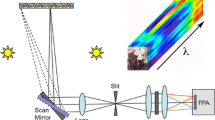Summary
Silicon, which was introduced as a reflectance standard by the COM in 1966, was withdrawn some years later following reports that its reflectance varied depending on how it was polished and how it was cleaned. For this reason, and because most of these standards were used in double-beam microscope-photometers, where measurements in oil are not made and cleaning is reduced to a minimum, the COM, at its meeting in Varna in 1982, approved their use in such instruments. Approval was withheld for their use in single-beam instruments. Prior to this it was decided to undertake an inter-laboratory study of the influence of different polishing procedures on the reflectance of silicon.
A single crystal of silicon was cut into twenty pairs of samples. One of each pair was polished and the other lapped with 3 μm abrasive. Both were sent to the National Representatives of the COM. Fourteen of these completed the polish of the 3 μm lapped sample and measured its reflectance before returning it to the coordinator of the experiment together with their reflectance values for the other sample. The majority of those participating completed their polishing with abrasives of grain size of about 0.05 μm and reported reflectances at 546 nm of approximately 37% on these well polished samples — in keeping with values determined ellipsometrically and by two independent sets of reflectance measurements made in the coordinating laboratory. Where, in other laboratories, coarser grits were used for the final stage −3, 0.25, or 0.1 μm — the surfaces produced were decidedly scratched and reflecrances measured on them ranged from 39–44%. The inverse relationship between reflectance and the quality of the polished surface is contrary to that observed with most opaque minerals.
The results of this experiment do not support the argument that water, compared with oil, as lubricant, inevitably reduces the reflectance of silicon, rather it is the grit size and quality of the polish that is most significant in this respect.
Zusammenfassung
1980 beschloß die Commission on Ore Microscopy (COM) der International Mineralogical Association, ein internationales Experiment zur Bestimmung des Einflusses von Poliermethoden auf das Reflexionsvermögen von Silizium durchzuführen, an dem sich 14 Laboratorien beteiligten. Ein Si-Einzelkristall wurde in 20 Probenpaare zerkleinert. Ein Teil eines jeden. Paares wurde poliert, der andere mit 3 μm Schleifpulver angeschliffen. Dieses Material wurde den Mitgliedem der COM zugesandt, die die Politur der angeschliffenen Probe vervollständigten. Die Mehrheit der Experimentteilnehmer verwendete 0,05 μm Schleifmittel für die Politur. Messungen des Reflexionsvermögens bei 546 nm ergaben Werte von nahezu 37%, in guier Übereinstimmung mit zweifach ellipsometrisch bestimmten Reflexionswerten des koordinierenden Laboratoriums. Andere Labors verwendeten gröbere Schleifmittel — 3, 0,25 und 0,1 μm, wodurch die Oberfläche sicher zerkratzt war, was zu einem Reflexionsvermögen von 39–44% führte. Die umgekehrte Proportion von Reflexionsvermögen und Qualität der Politur steht damit im Gegensatz zu den meisten opaken Mineralen.
Die Ergebnisse dieses Experiments unterstützen nicht die Argumentation, daß Wasser, verglichen mit Öl, als Schmiermittel das Reflexionsvermögen von Silizium herabsetzt. Ausschlaggebend für das unterschiedliche Reflexionsvermögen ist vielmehr die benutzte Korngröße und damit die Qualität der Politur.
Similar content being viewed by others
References
COM (1965) Commission on Ore Microscopy, minutes of meeting of the IMA Commission on Ore Microscopy held in New Delhi, December 1964. Econ Geol 60: 1326
COM (1967) Commission on Ore Microscopy minutes of meeting of the IMA held in Cambridge August 31 and September 3, 1966 (Bowie). Econ Geol 62: 278–282
COM (1969) Commission on Ore Microscopy (Bowie). Econ Geol 64: 110–111
COM (1979) IMA Commission on Ore Microscopy reports. Econ Geol 74: 1542
COM (1981) IMA Commission on Ore Microscopy, Chairman's Report, Meeting at Orleans, July 4, 1980, minutes. Econ Geol 76: 539
COM (1983) IMA Commission on Ore Microscopy. Minutes of the meeting held in Varna, Bulgaria on September 22, 1982. Econ Geol 78: 374–375
Rosendal K (1969) The influence of oxide layers onR% of Si and ellipsometer measurements on Si. In: Pauly H et al: Study of minerals and artificial materials in polished sections on the microscale, p 321. (Third Annual Regional Conference, May 2–3, 1969), Bull Geol Soc of Denmark (Copenhagen) 19(3): pp 319–430
Pauly H (1969) An attempt to produce “independent” reflectance references from SiC, Si and Hg. Ibid. In: Pauly H et al: Study of minerals and artificial materials in polished sections on the microscale, p 321. (Third Annual Regional Conference, May 2–3, 1969), Bull Geol Soc of Denmark (Copenhagen) 19(3): pp 321–322
Pauly H, Nielsen Ib H (1986) Investigations into the process of polishing ore minerals (in press)
Author information
Authors and Affiliations
Additional information
With 1 Figure
Rights and permissions
About this article
Cite this article
Pauly, H. Effects of different polishing methods on the reflectance of silicon. TMPM Tschermaks Petr. Mitt. 35, 261–273 (1986). https://doi.org/10.1007/BF01191989
Received:
Accepted:
Issue Date:
DOI: https://doi.org/10.1007/BF01191989




